 This is a really common question that arises when replacing existing hardware on a fire door assembly with new hardware:
This is a really common question that arises when replacing existing hardware on a fire door assembly with new hardware:
If existing holes in a fire door assembly are covered by the new hardware, is this compliant with the codes and standards?
NFPA 80 does not specifically state whether or not existing holes can be covered, but Chapter 5 addresses the acceptable ways for filling unused fastener holes in fire doors and frames. The options are:
(1) Install steel fasteners that completely fill the holes.
(2) Fill the screw or bolt holes with the same material as the door or frame.
(3) Fill holes with material listed for this use and installed in accordance with the manufacturer’s procedures.
For existing holes other than fastener holes, NFPA 80 states that the holes must be treated as a field modification. A field modification is where the listing lab is contacted through the manufacturer, and permission is requested to perform a modification (not covered by NFPA 80) in the field. After reviewing the written and/or graphic description of the work, the fire door or frame manufacturer may allow the work to be done in the field without the door or frame needing to be relabeled.
To find specific references to covering existing holes instead of filling them, we have to look at the NFPA 80 Handbook, where I found two notes indicating that covering holes is not acceptable. Although the information in the Handbook is not considered part of the code or standard, many AHJs and others refer to the Handbook and Commentary version of the codes and standards to understand the intent.
In Chapter 4 of NFPA 80, there is a section addressing components of a fire door assembly (2016: Section 4.2.6, 2019: Section 4.2.7). The paragraphs in this section allow components that are labeled, listed, or classified by different organizations that are acceptable to the AHJ. The Handbook information for this section states, in part:
Let’s assume that the new lockset/latch set with lever trim is from the same manufacturer as the original lockset/latch set that had knob trim. It might be entirely possible that the new lockset would use the same function and fastener holes as the original lock, with the probable need to drill additional holes for auxiliary through-bolts that are needed for lever trim. If that is the case, the installation of the new lock has not voided the fire rating of the door assembly. On the other hand, if the new lockset does not use the existing function and fastener holes and these holes are concealed/covered by the lock trim, then the fire rating of the door has been voided because there are unfilled holes in the door.
In the Handbook information for Section 5.5.7 (2016 and 2019 editions), there is this reference:
Caulking (including caulks for fire barrier penetrations) and other such putties/fillers are not an acceptable method for repairing most fire doors, and neither is placing a protection plate over the holes in doors and frames. It is important to research the construction of the door in question and seek direction as to how to correctly repair it before attempting to repair a damaged fire door.
Note that there is at least one caulk available that is listed for use filling holes in fire doors. Refer to the limitations on hole size, door material, and rating when using this product.
The bottom line here is that NFPA 80 does not specifically permit holes in fire doors and frames to be covered, and goes into great detail about how to fill the holes instead of just covering them. The NFPA 80 Handbook clarifies that covering holes without filling them is not in compliance with the standard.
What do you think? What are you seeing out in the field?
You need to login or register to bookmark/favorite this content.

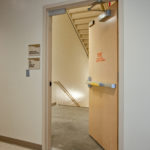
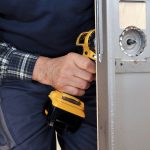
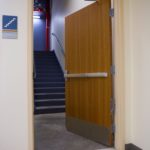
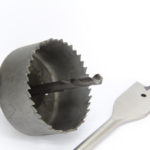



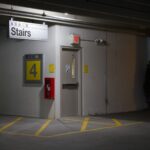
Wow! I think there are a lot of fire rated doors and assemblies that are non-compliant!
DB
Hi… What about painting touch up works of fire rated doors at site during preventive maintenanace and sealnt around the frame and adjcent wall maintenance during PM.. Can do it with inhouse team?
Painting a fire door is not considered a field modification. There’s more info here: https://idighardware.com/2019/04/qq-painting-refinishing-fire-doors/.
– Lori
NGP now have rated fire caulk, thru hole, cylinder lock, mortise lock and flush bolt prep fillers for use in both wood and metal doors and frames.
Good to know! Thanks Simon!
– Lori